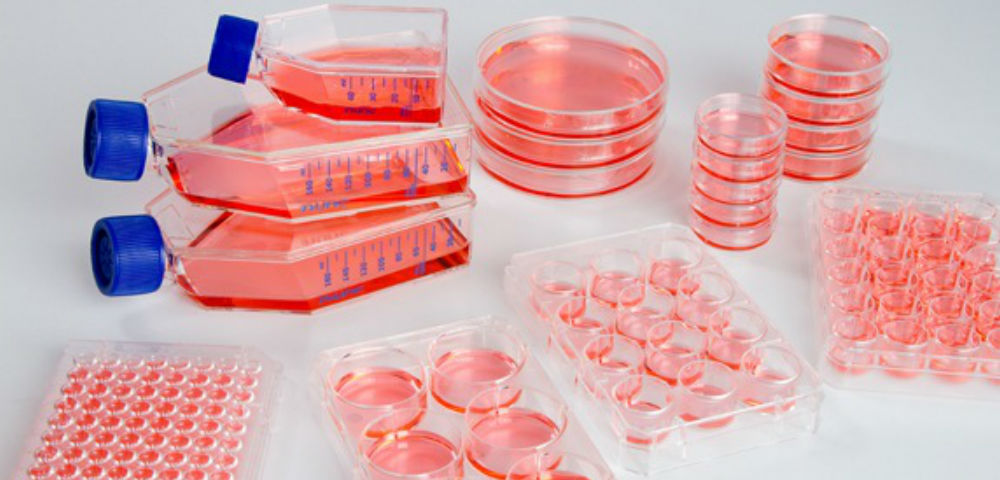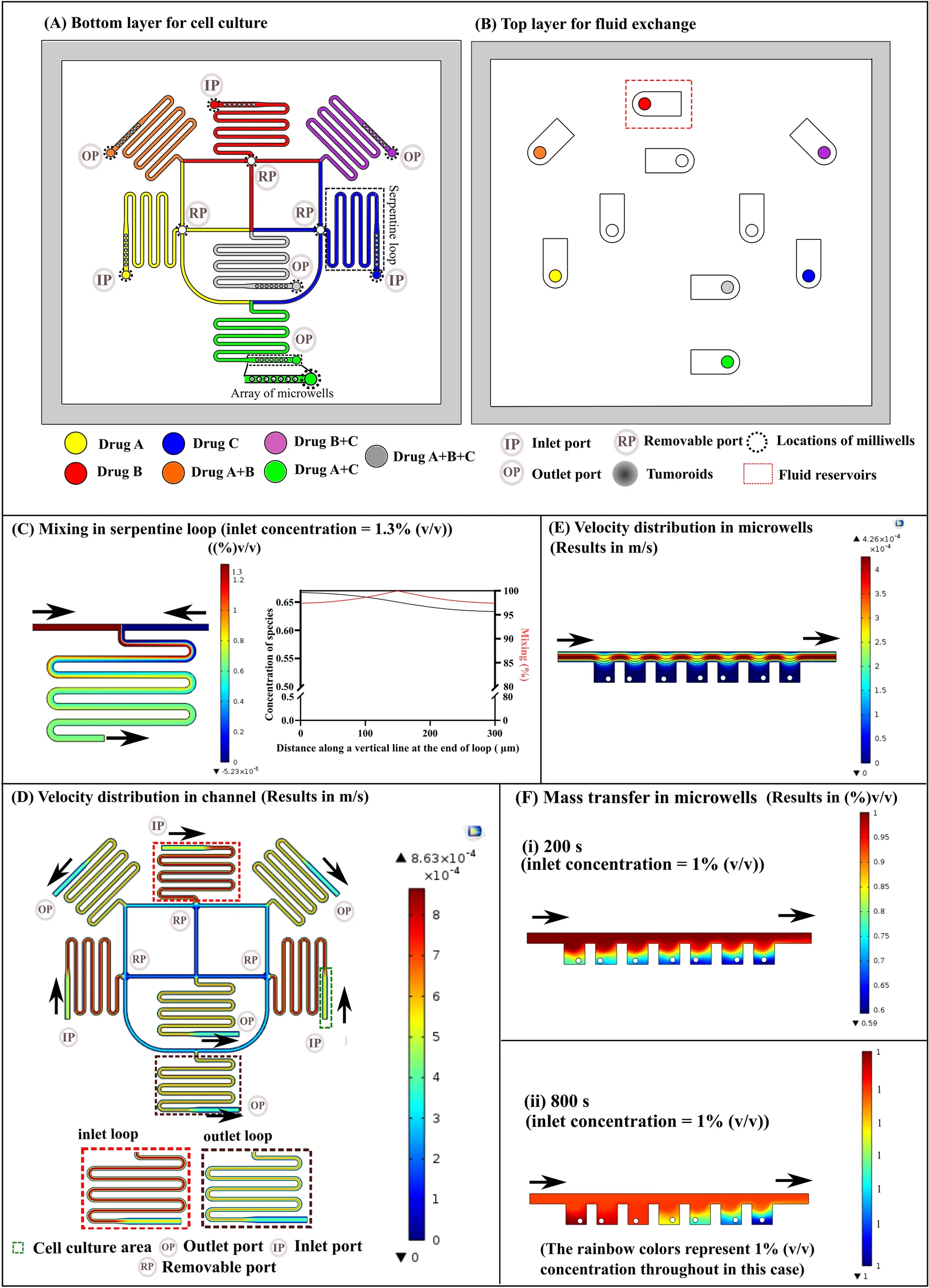
记录一下细胞培养相关流程。
基本设备
仪器
超净工作台/生物安全柜、培养箱、水浴锅、离心机、冰箱、血细胞计数器、移液枪、显微镜。
耗材
细胞培养瓶、培养基、吸管、枪头、酒精棉球、废液桶。
前期准备
高压灭菌
- 使用前加去离子水/超纯水,刚好没过圆底。
- 接一盆水,把排气管没入水中。
- 放入灭菌的物品,以两两对称的方式旋紧相对的螺栓,使螺栓松紧一致。
- 将排气阀关闭(即向下)。检查安全阀是否也是关闭状态。
- 打开灭菌锅电源,检查温度和时间设置,点击工作按钮,工作灯此时为绿。
- 灭菌完毕后,关闭电源。等压力表降至0处、温度降至100℃以下后,打开排气阀,旋开螺栓,取出灭菌物。
滤器过滤
滤纸
- 水系膜:蓝盒,不能过滤有机物。
- 有机膜:橙盒,既可以过滤有机物也可以过滤水。
组装
将两层滤纸放到垫圈上,凹面朝上。稍微拧紧,用注射剂打空气排水。然后完全拧紧,注射空气看看是否密封。做好以后用硫酸纸包住,在饭盒(铝箔纸包裹)里高压灭菌。
液氮罐操作
存取
- 戴好手套,注意个人防护。
- 查阅登记本,预先确定细胞所在位置。
- 打开液氮罐,将提斗提起,取出复苏细胞/存入冻存细胞。
- 将提斗放回,关闭液氮罐。
- 做好登记。
检查
要求少于1/3即需更换,需要加35L。测量时将吊绳缓缓降入液氮罐,等接触到液氮面时会有呲声,此时观察绳子位置(有红色记号,以最上面为准)。
相关试剂
缓冲液
PBS配置
| 成分 | 50 ml | 100 ml |
|---|---|---|
| NaCl | 0.4 g | 0.8 g |
| KH2PO4 | 0.01 g | 0.02 g |
| Na2HPO4·12H2O | 0.145 g | 0.29 g |
| KCl | 0.01 g | 0.02 g |
PBS配完高压灭菌,注意盖子别拧紧。
D-Hank’s
| 成分 | 50 ml | 100 ml | 200 ml | 500 ml |
|---|---|---|---|---|
| NaCl | 0.4 g | 0.8 g | 1.6 g | 4 g |
| KCl | 0.02 g | 0.04 g | 0.08 g | 0.2 g |
| Na2HPO4·12H2O | 0.0076 g | 0.0152 g | 0.0304 g | 0.076 g |
| KH2PO4 | 0.003 g | 0.006 g | 0.012 g | 0.03 g |
| 葡萄糖 | 0.05 g | 0.1 g | 0.2 g | 0.5 g |
培养基配置
DMEM
| 成分 | |
|---|---|
| 超纯水 | 100 ml |
| DMEM培养基 | 1.34 g |
| NaHCO3 | 0.185 g |
RPMI-1640
| 成分 | |
|---|---|
| 超纯水 | 100 ml |
| RPMI-1640培养基 | 1.04 g |
| NaHCO3 | 0.1 g |
不搅拌,在超净台加1 mL双抗(1%),使用滤器过滤,再加10% 血清(10 mL)混匀,于4℃下保存。血清和双抗使用前24 h应放4℃,使用后血清用封口膜与药胶带封好,4℃保存,双抗-20℃保存(双抗不能反复冻融,因此之前得分装保存)。
胰酶配制
在D-Hank’s中加入0.25%的胰酶粉(常用0.125 g / 50 mL)。
冻存液配置
即含有DMSO和血清的溶液。存在如下几种常见配方,血清也可以按需增加:
- 血清:DMSO = 9:1
- 含血清培养基(血清浓度为10%-20%):DMSO = 9:1
- 含血清培养基(血清浓度为10%-20%):血清:DMSO = 7:2:1
培养箱检查
- CO2:注意看示数,左边应该在第一、二格之间;右边的不能太低。大概每3个月就得注意了。
- 水:每1个月就得注意了。水需要取超纯水,高压灭菌后在传送窗冷却,至室温时拿进去倒。
无菌操作
- 玻璃板高度合适,使用前后用75%乙醇擦拭超净台及里面物品。
- 注意摆放原则,减少污染可能。
- 时刻假定手是污染的,进出酒精棉擦拭。
- 细胞转入培养箱中时,带一块酒精棉,注意擦拭接触部分。
细胞培养
细胞复苏
- 应遵守慢冻快融的原则。有水浴锅则将其调至37℃,若没水浴锅,则预先准备热水,温度计示数约37℃时,取出冻存的细胞迅速放入后将细胞面浸至水面以下不断摇动至融化,但注意不要全部浸入水浴锅以免污染。当看到只有一小块冰存在时,即可从水浴锅中取出。
- 打开冻存管迅速将细胞悬液吸到离心管中(离心管中一般预备2倍以上被冻存细胞的培养基,以减少DMSO毒性),轻轻混匀。
- 1000 rpm离心3 min,弃去上清液。
- 用少量(1 mL)培养基将细胞悬起,将细胞悬液转移至事先加入完全培养基的培养皿/瓶中(大致参考:培养皿8 mL,T75培养瓶10 mL)。将细胞混匀后,于显微镜下观察,在10x和20x倍数下拍照,没问题则置培养箱中培养。一般复苏细胞需要24小时内第一次换液。
参考操作视频。
细胞换液
- 观察:一般间隔2~3天,可根据培养基颜色变黄判断,刚复苏细胞最好在24小时内换一次。用显微镜观察生长状态,如果有死细胞样就及时换液。
- 弃液:弃去培养皿/瓶中的培养液,将培养皿盖子半开,使用移液枪吸去现有培养液。
- 清洗:用PBS清洗1-2次,注意别直接冲洗细胞贴附的面。
- 加液:添加新鲜的含血清培养基。
- 培养:显微镜下观察检查是否还有漂浮细胞等,后放入孵箱培养。
细胞传代
贴壁细胞
- 观察:显微镜观察培养细胞的生长状态是否良好、细胞密度是否达到了80%-90%。
- 弃废液:倒(吸)掉细胞皿/瓶里培养液。
- 清洗:用PBS清洗1-2次,以免中和后面加入的消化液。
- 消化:加入适量的胰酶(培养皿约1.5 mL,T75培养瓶约为3 mL)进行消化,轻轻晃动使其覆盖整个瓶底。放入培养箱,孵育3 min。在此期间可以准备好一个干净的管子用于随后操作。消化完毕后,显微镜下大部分细胞应该收缩变圆。
- 吹打:加入适量含血清培养基(约胰酶2倍的量),用于中和胰酶。使用玻璃管轻柔吹打,混匀细胞。
- 离心:将上面混匀的细胞转移至离心管,1000 rpm,3 min。有条件的话可以把离心机设为4 ℃,该温度下可以有效降低胰酶活性以保护细胞。离心完毕后,使用培养基进行细胞重悬。
- 计数(可省):取少量细胞加入PCR管/离心管,用台盼蓝(Trypan blue)以1:10稀释,用于细胞计数。由于稀释了10倍,因此最后需要×10,以补正倍数。
- 传代比例:根据需求(如1:3),取合适的细胞液分装继续培养。
细胞密度:看本视频。
另一个传代操作视频。
悬浮细胞
一般传代可直接将细胞原液分置其它培养瓶内,加入完全培养基继续培养,如要高浓度可先离心1000 rpm,5 min后加入完全培养基,轻轻吹匀后,分置其它培养瓶内加入完全培养基继续培养。
细胞冻存
前面的步骤基本上和传代一致。
- 冻存前准备:预先配置好冻存液。
- 观察:选择对数生长期细胞。
- 弃废液:倒(吸)掉细胞瓶里培养液。
- 清洗:用PBS清洗1-2次,以免中和后面加入的消化液。
- 消化:加入适量的胰酶(培养皿约1.5 mL,T75培养瓶约为3 mL)进行消化,轻轻晃动使其覆盖整个瓶底。放入培养箱,孵育3-5分钟。在此期间可以准备好一个干净的管子用于随后操作。消化完毕后,显微镜下大部分细胞应该收缩变圆。
- 吹打:加入适量含血清培养基(约胰酶2倍的量),用于中和胰酶。使用玻璃管轻柔吹打,混匀细胞。
- 离心:将上面混匀的细胞转移至离心管,1000 rpm,3 min。有条件的话可以把离心机设为4 ℃,该温度下可以有效降低胰酶活性以保护细胞。离心完毕后,使用培养基进行细胞重悬。
- 计数:取少量细胞加入PCR管/离心管,用台盼蓝(Trypan blue)以1:10稀释,用于细胞计数。由于稀释了10倍,因此最后需要×10,以补正倍数。冻存所需细胞密度一般为1-5×106/mL。
- 冻存:加入冻存液,轻轻吹吸均匀,按每管1 mL的量分装入冻存管。
- 用绳子吊在液氮罐液面以上半天,然后放入冻存管。
- 4℃冰箱20 min,转入-20 ℃冰箱30 min,-80 ℃过夜。
- 有条件则可使用冻存盒,直接可以放入-80 ℃,降温速度基本保持为-1℃/min。最终都放入液氮罐。
一次冻2皿,6管,保证冻存细胞数为10管左右。
参考操作视频。
补充内容
细胞污染
可以看此,了解常见污染原因。




